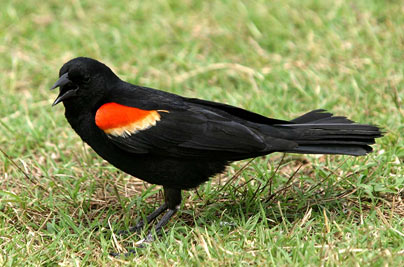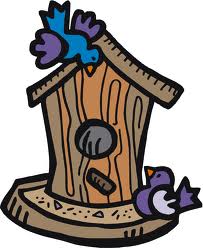By: Illyria Lyonesse
As Ostara approaches, everyone is looking for signs of spring. The snow… has melted, the temperature is rising, and the grass is turning green. Another sign of spring’s return is the American Robin. But did you know that many robins, the harbinger of spring, can stay within their breeding range all year? They are difficult to spot because most of them do migrate, and the ones that stay behind primarily roost in trees and spend much less time on the ground than they will in the s pring.
pring.
So what birds can we look for as true signs of spring’s arrival? Killdeer and Red-winged blackbirds return to their nesting grounds in the spring. Bird songs and behavior also change as spring nears and they prepare to mate. The males sing quite a bit more in the spring to attract a mate, and male cardinals will feed their mate sunflower seeds as part of courtship.
The types of food offered will also affect what birds come to your feeders. The best choice to offer is sunflower seeds, as they will attract the widest variety of birds. Black oil sunflower seeds are the easiest for small birds to crack and provide a high fat content. Safflower is also a popular choice, especially for people with squirrel problems (most squirrels don’t like safflower, but are very attracted by sunflower seeds). White millet is a favorite among ground-feeding birds like doves. Golden millet, red millet, and flax should be avoided. These are often offered as “filler” in packaged seed mixes, but few birds will actually eat them.
Finally, be patient! It may take a while after you set out a feeder for the birds to notice. If birds have not come to the feeder within a few days, try sprinkling some seeds on the ground nearby. Birds have a very poorly developed sense of smell, so they rely primarily on sight to find food.
